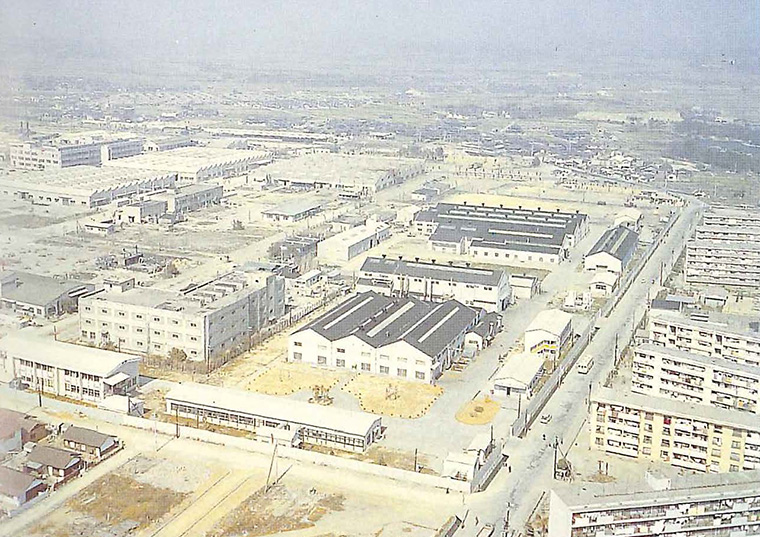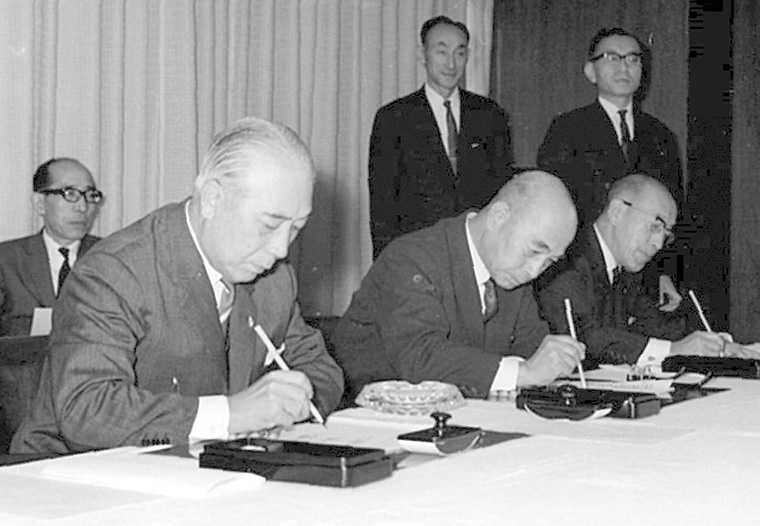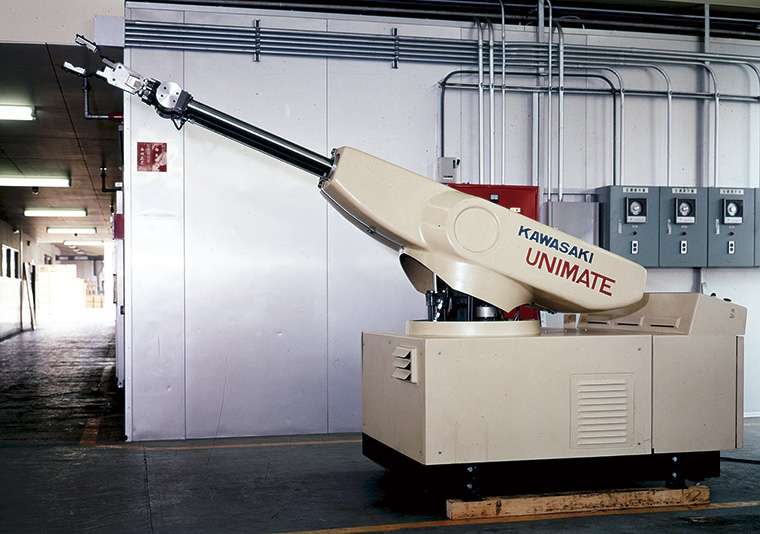Read the history
Breakthrough –
Rebirth
1955–1972
-
1959
Strengthening the land division and introducing a divisions system
After the war, our company restarted with the shipping business at the center. To build a foundation that wouldn’t get swayed by economic fluctuations, we made a goal for land and ships to be 50/50, and we worked toward achieving that goal. In 1959, we spun off the electrical department and established Kawasaki Denki Seizo Co., Ltd., reinforced the motor department, and constructed various specialized factories. In 1961, we introduced the divisions system, and five business divisions were established: shipbuilding, machinery, industrial machinery, precision, and steel structures. This marked our full-scale entry into the steel structures sector. In 1966, we merged with Yokoyama Kogyo Co., Ltd., a manufacturer of industrial, civil engineering, and transport machinery.

Newly established Akashi Works
-
1969
Merger between Kawasaki Heavy Industries, Kawasaki Rolling Stock Manufacturing, and Kawasaki Aircraft
From around 1960, during Japan’s period of rapid economic growth, all industries were reorganizing, and corporations were restructuring to strengthen their international competitiveness.
Our sixth company president, Masashi Isano, started considering the concept of uniting the Kawasaki Group with the aim of re-establishing the company as a "comprehensive heavy industrial enterprise covering land, sea, and air," as envisioned by our first president, Kojiro Matsukata.
The presidents of the three companies—Masashi Isano from Kawasaki Heavy Industries, Masao Ueda of Kawasaki Rolling Stock Manufacturing, and Kiyoshi Yotsumoto of Kawasaki Aircraft—all considered the merger, and signed the memorandum of understanding in 1968. On April 1, 1969, Kawasaki Heavy Industries absorbed the other two companies, achieving the merger of the three.

Signing of memorandum of understanding on the merger of the three Kawasaki companies
-
1972
Further progress as a comprehensive heavy industrial enterprise
Around that time, new businesses spanning the fields of land, sea and air were being expanded into. In the land division, as well as constructing the Harima Works to specialize in large industrial machinery and steel structures, we also entered the industrial robot sector and developed the Kawasaki-Unimate 2000, the first Japanese-made industrial robot. In 1972, we merged with Kisha Seizo Co., Ltd. and gathered momentum as Japan’s largest railcar manufacturer. In the shipping division, we constructed a large number of ultra-large tankers and container carriers from the latter half of 1972. We also launched Japan’s first teardrop-shaped submarine.
In our aircraft division, we received orders for the C-1, Japan’s first twin-engine transport jet, and the F-4EJ, a jet fighter to be jointly produced with Mitsubishi Heavy Industries, Ltd. for the Air Self-Defense Force.

Kawasaki-Unimate